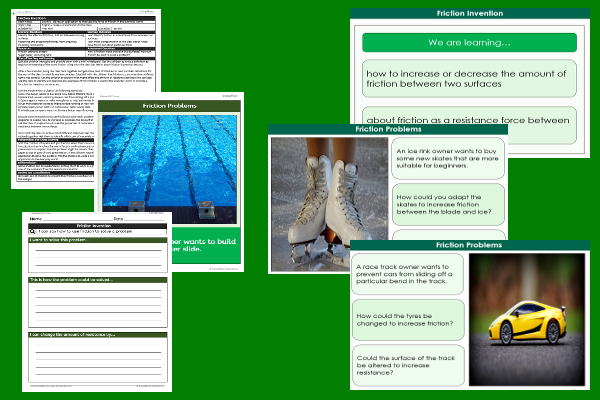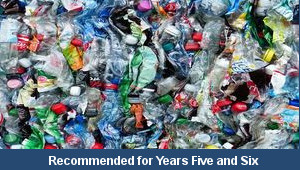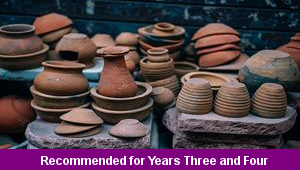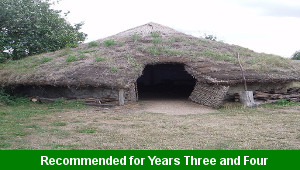Lesson Six – Friction Invention

This science teaching pack for Key Stage Two gets the children to practise devising and recording information about an application or a special device that can use the force of friction in the everyday world to solve a specific type of problem.
The class can identify and explain how the force of friction can work between a range of different surface materials at high and low resistances.
Download this teaching pack including a lesson plan, classroom activities and an interactive presentation to practise devising an application or a special device that can use the force of friction in the everyday world to solve a specific type of problem
Activities in this teaching pack include display posters to describe some of the different scenarios that could be solved using friction and a template to select and devise a way to solve an everyday problem using friction that creates resistance between surface materials.
The interactive presentation can be used to explore how to devise an application or device that can use the force of friction in the everyday world to solve a problem.
This lesson is part of a science scheme of work to get the children to investigate, describe and test the effects of air and water resistance and friction on a range of different objects and materials presenting results using graphs and tables. There are teaching activities for shared learning, differentiated worksheets to support independent learning and interactive presentations to introduce concepts and key skills.
-

Recycling
Research and present some of the benefits and disadvantages that can be produced when recycling different materials at home and in school
-

Viking Pots
Develop and refine a range of different art and design techniques when working with clay to make pots that represent Viking culture and traditions
-

Bronze Age
Research and illustrate how life in Britain developed and changed during the Bronze Age including the growth of communities and trade
-

Future World
Practise using apostrophes correctly in matching sentences to describe some of the things that might be owned by families in the future
